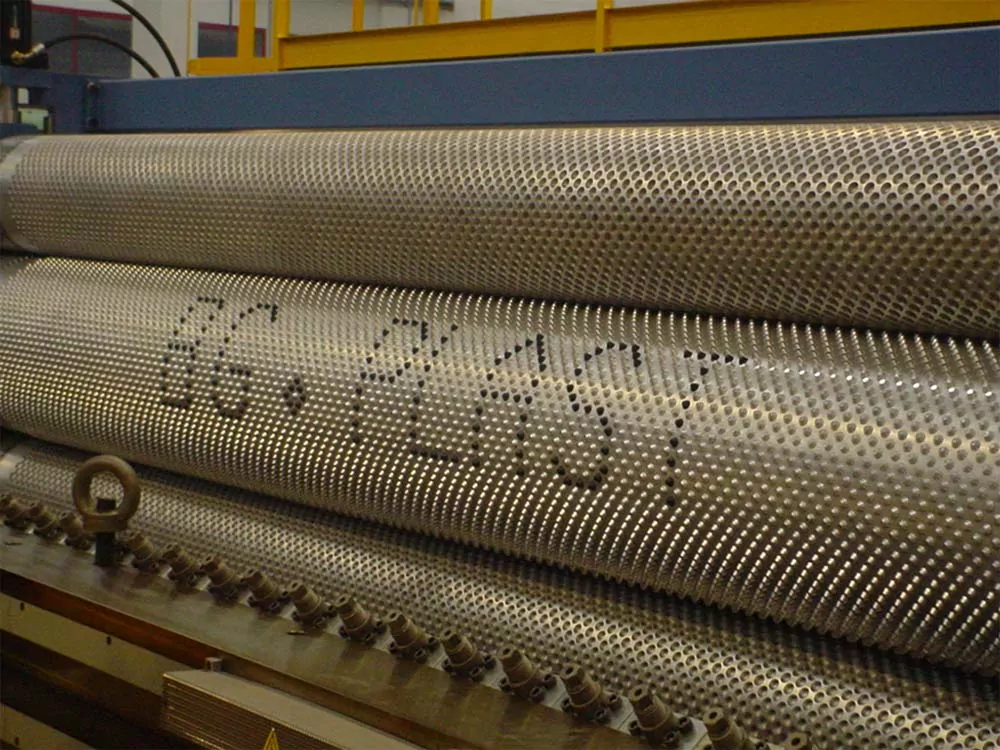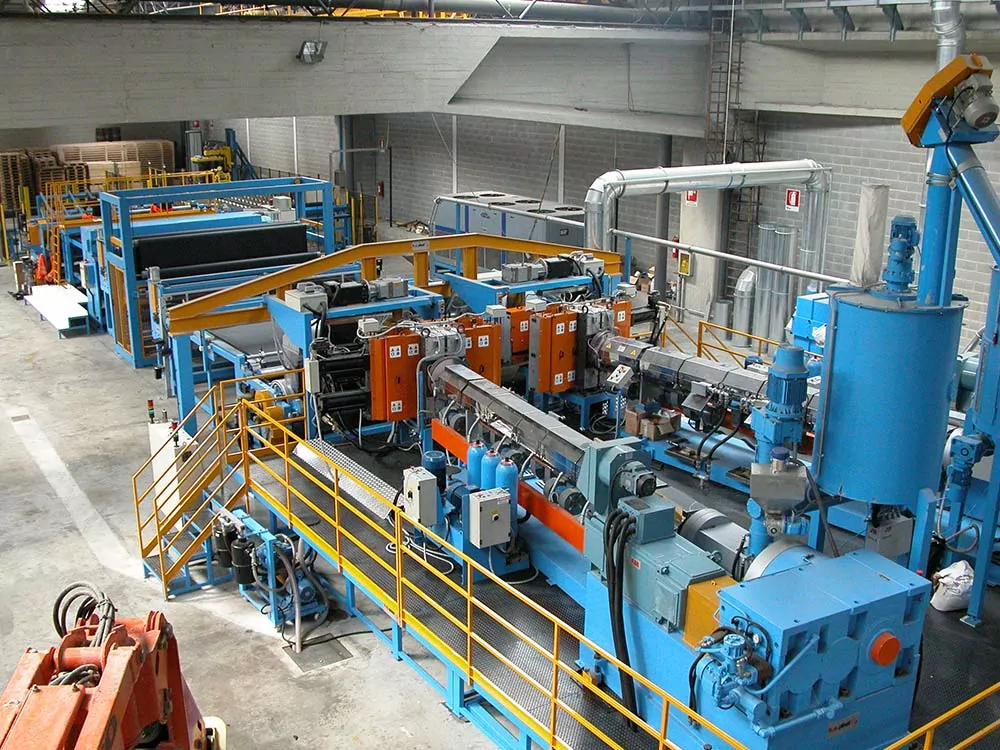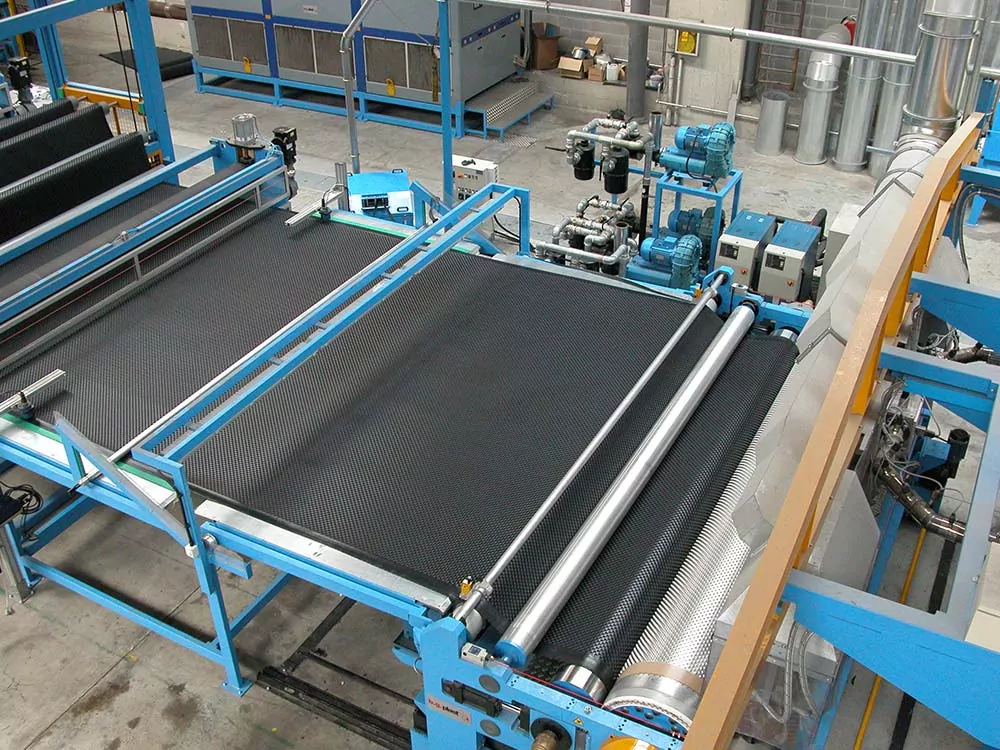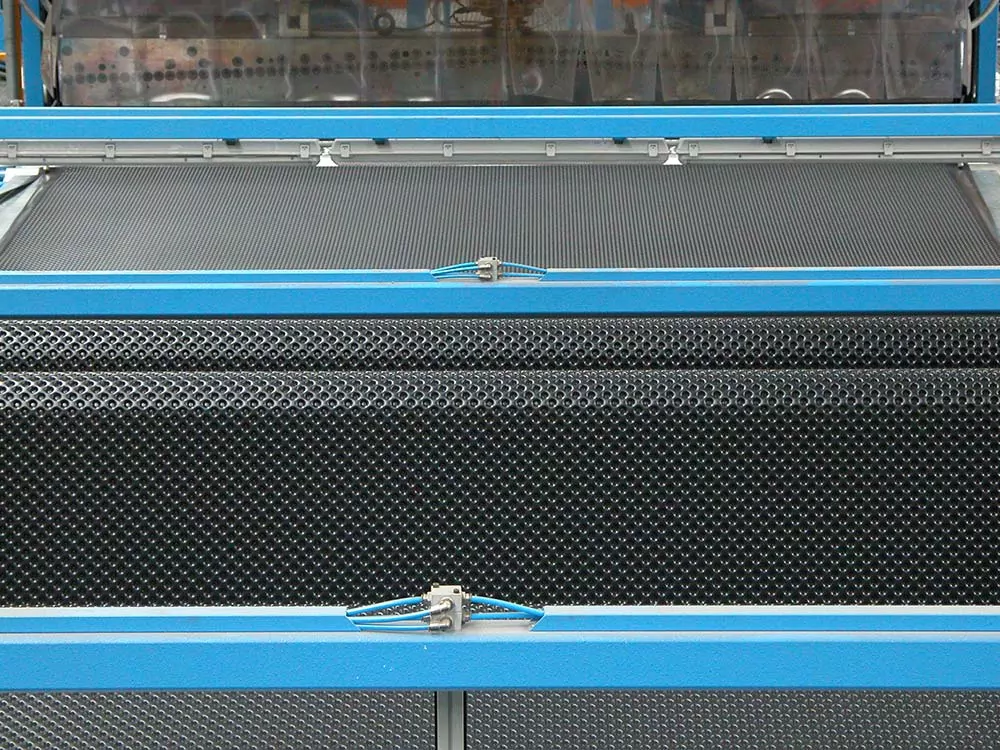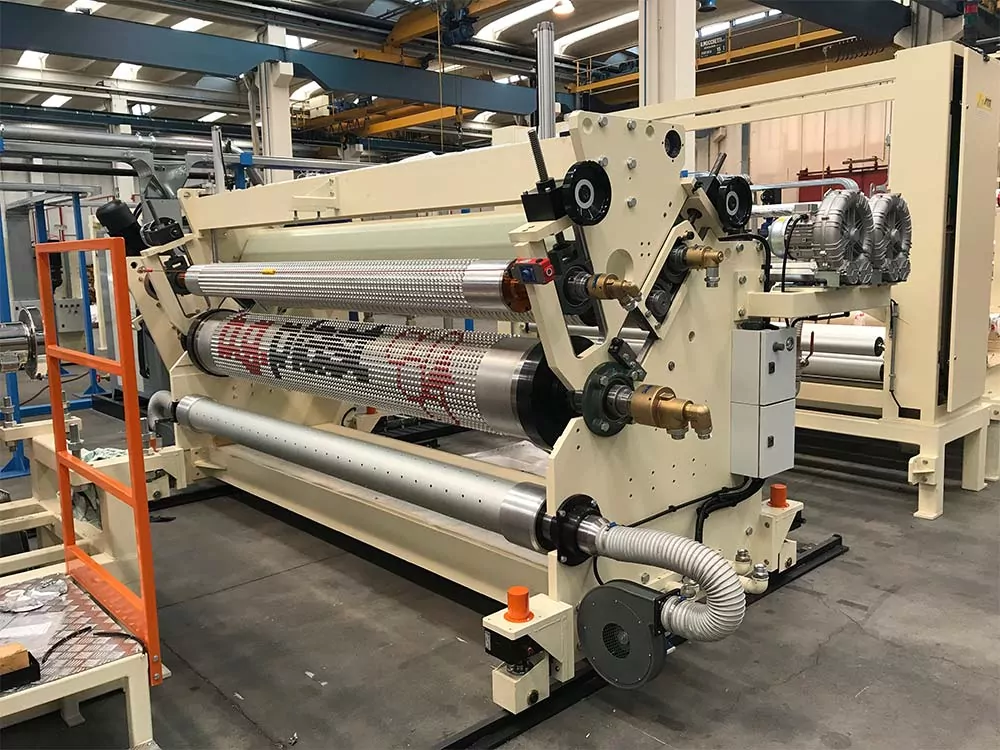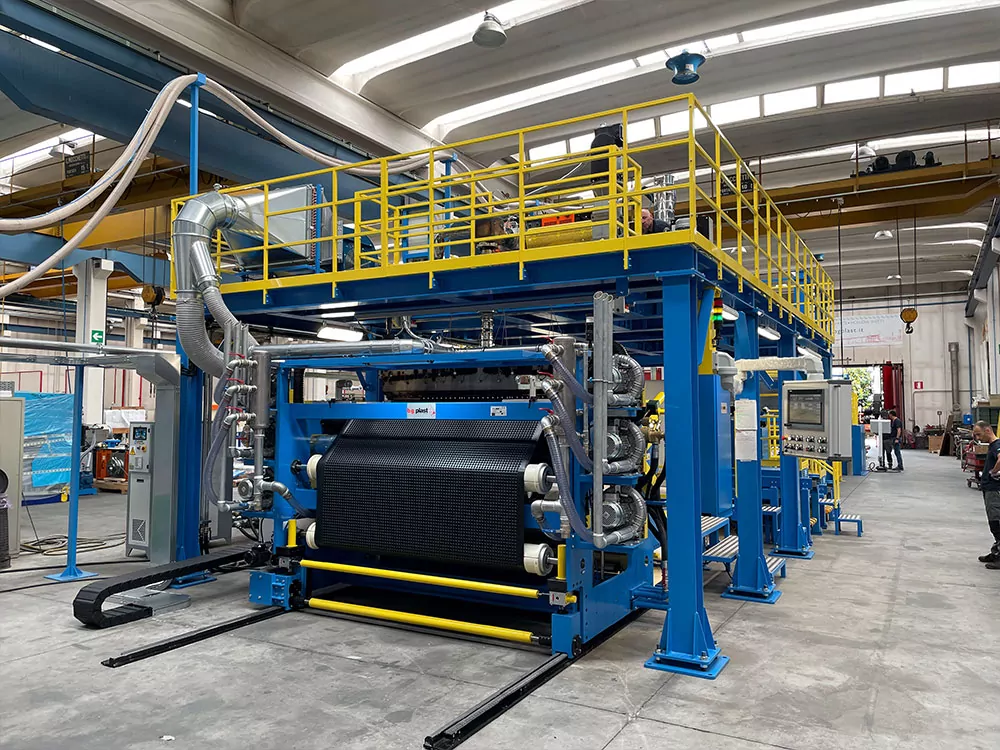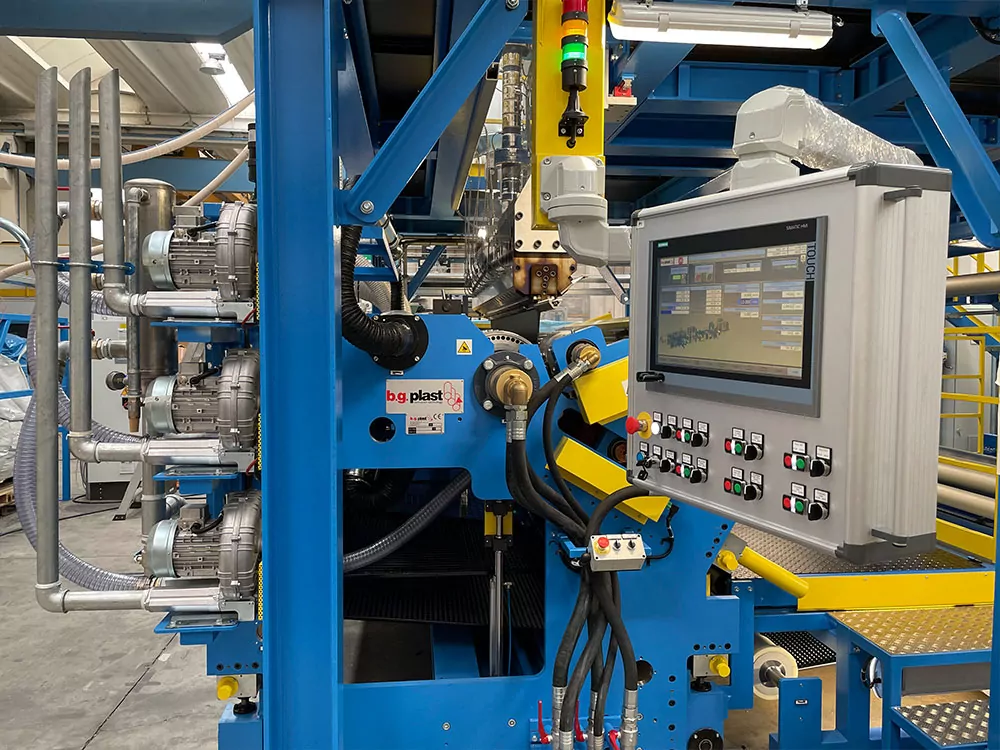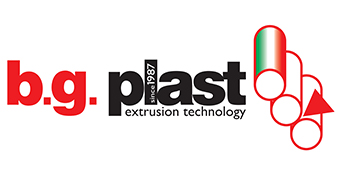 Dimpled Sheets
Dimpled Sheets
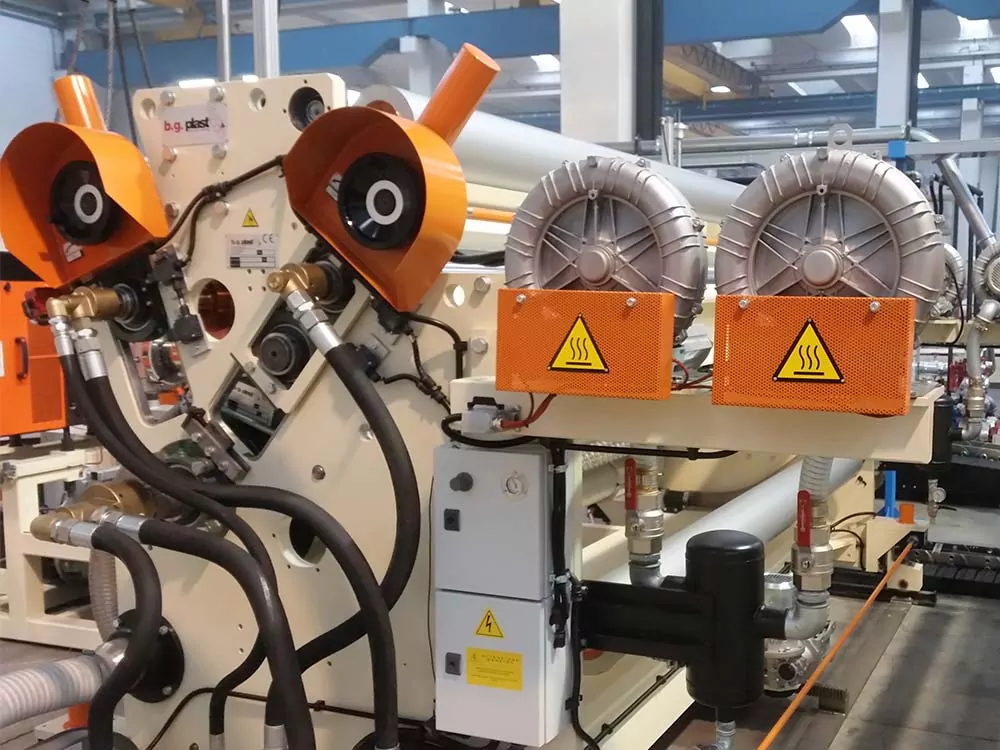
Those familiar with this type of production know, how important is the use of low-cost raw material to keep the selling price down. What could be cheaper than simple washed and grounded material? However, this post-consumer material contains significant percentages of fats and soaps that certainly do not help the extrusion process.
So, a special system had to be devised: starting from the flake feeding into the extruders, to intensive degassing with high-capacity pumps, to the extrusion screw capable of absorbing the required high flow rates.
The use of this type of plastic material entails the presence of impurities. Given the low membrane thickness, if these impurities are not completely eliminated, they inevitably create ‘holes’ in the membrane itself, rendering it useless for the purpose.
Therefore, the filtering phase of the molten plastic material has required the use of a certainly imposing screen changer unit, but absolutely effective: the elimination of the tiniest harmful particles is guaranteed.
A suitable gear pump completes the plasticizing unit, ensuring a constant feed to the extrusion head.
Membrane widths range from 2000 to 5000 mm.
The extruded product is then deposited onto an aluminium alloy roll on which several thousand moulding highly conductive dimples are mounted. This step is considered the heart of the entire process. Through this special calender, the dimpled membrane is formed.
The thermoconditioning system of the calender rolls has also a particular importance: this aspect has been thoroughly studied by BG Plast engineers.
However, BG Plast can manufacture similar types of plants with the same output, starting also from material in granules (virgin or regenerated). This obviously greatly simplifies the mechanical aspect of polymer transformation; this means fewer resources both in terms of installed power and initial investment.

